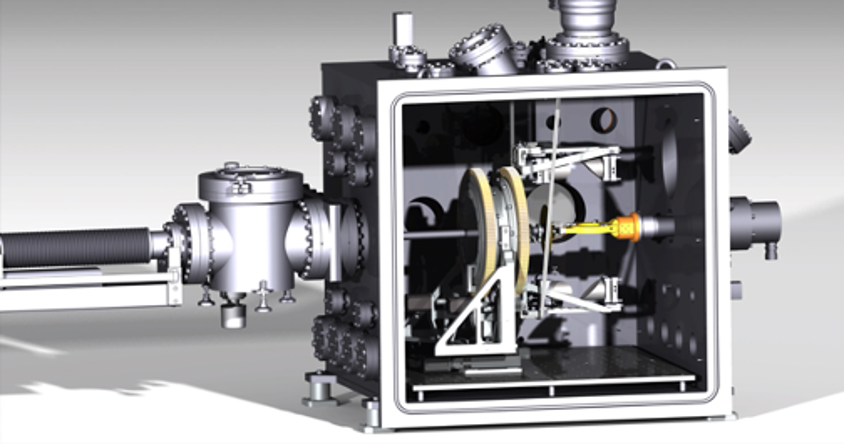Observing Cometary Simulants using THz-Spectroscopy
- Space Research and Planetology Division, Physikalisches Institut, University of Bern, Bern, Switzerland (linus.stoeckli@unibe.ch)
The exact physical structure of the interior of comets is unknown. Further in-situ exploration is required to discover the relationship between non-volatile and volatile materials.
Advancements in the last decades have been able to close the THz gap, thus allowing the study of materials between microwave and IR wavelengths. THz spectroscopy is being used more and more to analyze materials and study the hydration of samples. This makes the application of THz spectroscopy promising for investigations in resolving the sub-surface structure of comets. Our novel laboratory setup COCoNuT (Characteristic Observation of Cometary Nuclei using THz-spectroscopy) provides the capabilities to simulate the conditions we would encounter on a comet.

Figure 1: A rendered image of the CAD model of our in-house designed vacuum chamber. To the left we see the load-lock chamber, which enables us to exchange the sample without flooding the main chamber. The sample holder (yellow) is then pushed along the central axis of the goniometer and pressed onto the cryo-cooler. The goniometer is mounted on an x-y stage, enabling us to scan the sample. A window is attached diagonally onto the right hand side of the chamber, which will server as a mounting point for a solar simulator (lamp). By shining light onto the sample we expect to observe sublimation.
The vacuum chamber contains a commercial time domain THz-spectrometer to perform proof-of-concept measurements with frequencies from 0.1 THz to 5 THz. The in-house produced simulants, consisting of water ice and cometary dust analogues, can either be measured in transmission or reflection and at various pressures down to 10-7 mbar and temperatures down to 50 K. As opposed to ground penetrating radar, THz-spectroscopy provides a better resolution (sub-centimeter) while still penetrating the surface layer on a centimeter level.
Due to the fingerprint absorption spectrum of water vapor, THz-spectroscopy can also be used to analyze the sublimation above the surface. Analyzing the ejection of small particles can provide information about the sub-surface structure as well.
The findings of our proof-of-concept setup will lay the groundwork for a future in-situ mission to a comet.
We present our first measurements with our newly built setup.
How to cite: Stoeckli, L., Ottersberg, R., Pommerol, A., and Thomas, N.: Observing Cometary Simulants using THz-Spectroscopy, Europlanet Science Congress 2024, Berlin, Germany, 8–13 Sep 2024, EPSC2024-834, https://doi.org/10.5194/epsc2024-834, 2024.